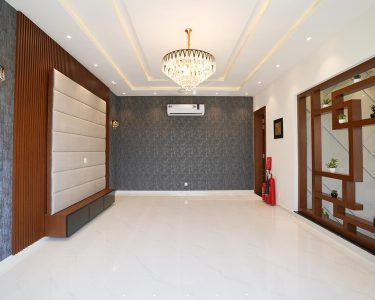A humidity chamber is a specialized piece of equipment that is designed to create and maintain a specific level of humidity and temperature in a confined space. The purpose of this is to simulate real-world situations and evaluate a product’s performance in those conditions.
A humidity conditioning chamber is vital equipment to assess the performance and durability of materials and products. Products created in labs and production facilities are unable to predict how they would behave in the real world. In order to generate such a realistic atmosphere, a humidity chamber proves to be an effective instrument.
Evaluating the ability of food items to maintain their quality despite the effects of high temperatures and humid conditions is an ideal application for a humidity chamber. Apart from the food industry, these chambers are highly employed in the cosmetic and drug industries.
How Humidity Conditioning Chambers Works
Humidity chambers are consisting of heating and cooling systems, generators, and humidifiers. By controlling these elements, a real-world and specific humidity and temperature level is created. Following are the main elements of humidity chambers and their functioning:
- Heating elements like heat strips to increase the temperature within the chamber
- Cooling elements like an evaporator coil to reduce the temperature of the chamber
- Humidifier to add moisture into the chamber to raise the humidity level inside the chamber
- Dehumidifier to take out the moisture to lower the level of humidity
- Monitoring and control unit to continuously monitor and regulate the environment of the chamber
Functions of a Humidity Chamber
- Temperature regulation: To replicate the real-world environment, along with humidity control, many humidity conditioning chambers offer temperature control facilities. This helps manufacturers to assess the potential of the product under certain conditions.
- Humidity control: These chambers can generate and regulate a wide range of humidity levels even up to extremely dry conditions. This precise control allows industries to stimulate real-world conditions like manufacturing products for most dried and moist conditions.
- Data monitoring: Accurately monitoring and recording temperature and humidity is crucial for obtaining accurate results. It is possible to obtain better quality goods by making the necessary modifications to the material or product through data monitoring and environmental condition assessment.
Specifications of a Typical Humidity Conditioning Chamber
Though the specifications can vary from manufacturer to manufacturer and as per the industry requirements, in general, the following are the specifications of a typical humidity chamber:
- Shelves: 2 no. SS Shelves
- Timer: 999 min (Changeable to Hrs).
- Temperature range: Ambient to 65ºC
- Humidity Chamber: Ambient to 95%RH
- Accuracy: ± 2ºC
- Inner Side: Stainless Steel
- Outside: – Mild Steel Powder coated
- Viewing: Viewing glass incorporated into a visual examination of a sample
- Dimensions: Inner: 455 x 455 x 710 mm & Outer: 660 x 930 x 1515 mm
- Working power: 15.0kw
- Temperature Rise Speed: 1.0℃~3.0℃/min
- Temperature Fall Speed: 0.7℃~1.0℃/min
Applications of Humidity Conditioning Chamber
- Pharmaceutical Industry: The most common use case of a humidity chamber is in the pharmaceutical industry to test the stability of drugs and medicines in various conditions.
- Packaging Industry: Most packaging materials have to go through the humidity test to ensure if package can be delivered safely in extreme conditions of humidity. It ensures that the product meets the criteria for efficiency, security, and quality established by certain industries.
- Automotive Industry: Automotive products and parts are regularly run through extreme cold and hot conditions. To measure the durability and efficiency of a specific part of an automobile in specific humidity and temperature, humidity test chambers play the key role.
- Electronic Industry: Testing the performance and reliability of electronic components like resistors, and transistors, under varying humidity and temperature levels.
- Constructions Industry: Assessing the behavior of building materials under specific humidity and temperature to ensure that construction would be sustained in harsh conditions.
- Material Testing: Allow researchers and manufacturers to assess how materials respond to varying humidity and temperature conditions. This helps to identify the weakness of the material and alerts manufacturers to imply alternatives for specific conditions.
Humidity chamber are vital tools for various industries including pharmaceutical to automobile industries to assess the durability and performance of products. By controlling the humidity and temperature, manufacturers can create a real-world environment and ensure reliable products in various conditions.







2 Comments